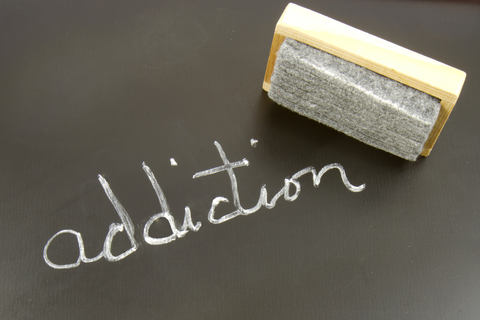Quitting alcohol or other drugs is hard. Relying on willpower alone sets you up to relapse. But that’s not because you’re not strong enough. Instead, there are outside factors driving you to falter. A relapse prevention plan helps you face those things so you don’t have to rely on willpower alone. This blog will help you create your own relapse prevention plan and teach you how best to use it.
When Do You Need a Relapse Prevention Plan?
Anytime you are trying to stop or cut back on your drug or alcohol use, you risk relapse. In fact, relapse is such a normal part of the process of addiction, most people assume you can’t recover until you’ve had a relapse or two. However, it is possible to maintain your efforts without slipping. Therefore, anytime you are trying to stop or cut back on drug or alcohol use, a relapse prevention plan can help. You don’t have to identify as an “alcoholic” or “addict” in order to benefit from having a plan.
Key Aspects of a Relapse Prevention Plan
As you start to develop your relapse prevention plan, there are a few things to keep in mind. First, having your plan written out saves you from needing to remember it. Let’s be honest. Your memory isn’t going to be working the greatest when you’re facing triggers. Next, you can design it in any way that works for you. Some people choose to use a separate page for each section. Other people fit everything on the same page. Still others prefer to fill out a pre-printed plan (your therapist can help you find one if this is what you prefer). Finally, keep a copy readily available so that you’ll always be able to reference it. Some people prefer to keep a digital copy on their phone so they don’t have to carry a written copy.
The following are the most important aspects of a relapse prevention plan. Keep in mind, you can add whatever other sections you find are important.
Potential Triggers

In order to prevent relapse, you need to know your potential triggers. What makes your crave your substance of choice? Usually, these triggers include people, places, and things that you associate with your previous substance use. For example, if you always drank with certain friends, those friends might be triggers for you. Likewise, if you always smoked weed after you got drunk, drinking might be a trigger using weed.
When you right this section, be honest with yourself. It isn’t going to help if you say “there’s nothing that will trigger me. I’m over it.” By writing these things down, you aren’t saying these things WILL trigger you. Instead, you’re saying these are your vulnerabilities, and you need to be watchful.If you struggle to know what things might trigger you, ask your friends and family what associations they’ve noticed. Talk to your therapist to see if there’s anything she might have seen.
You can make this list as long as you need to. However, you should have at least five of your biggest triggers to create your biggest success. Complete this step first before moving on to other steps, as your triggers can inform your needs in other areas. However, if you find a new trigger later on, you’re always welcome to revise your plan.
Tools to Manage Triggers
After you’ve determined what your triggers are, decide how you will manage them. For each of the triggers you listed in the previous section, create a plan for managing it. Be as specific as you can.
For example, if you identify one of your triggers as “stressful work day,” plan how you will handle stressful work days in the future. You might decide that on those days, you’ll come home from work, take a warm shower, have a hot meal, and then watch a movie with your partner. You might need a couple of different tools in order to adequately counter a trigger, but find things that work specifically for your personality.
General Coping Skills
The next section involves a list of general coping skills. These are things that you can do anytime you’re facing a difficult time, whether you’re thinking about drinking/using or not. These do not have to be specific, but they should be things that you’d be willing to try. For example, if you know that you absolutely will not do yoga, do not include it on your list.
Sometimes, it helps to ask friends and family members what they do when they’re facing a difficult time. Some examples include listening to music, cleaning, going for a run, talking to someone, and playing a video game.
Support System
Coping skills are great ways to counter triggers, but sometimes, you just need a little extra support. This section includes those people that support you through difficult times. Some of these supports may be specifically for coping with triggers. Others might be more appropriate as distractions from what you’re going through. Regardless of their role in your support system, remember to add their phone number so that you have it readily accessible when you need it.
Some examples of social supports might include family members, friends, or coworkers that you turn to for support. If you’re using peer support groups as part of your treatment, you might include your sponsor or members of your group. And finally, it can also be helpful to include your therapist as a last resort contact in case others in your support system are not able to answer.
Your Why
The final section that should be included in your plan is a statement about your why. These are your reasons for cutting back or getting sober. You can do this section in any format you like. For example, some people might find pictures more adequately speak to them. So they’ll include pictures of their kids, their spouse, and the things they enjoy doing.
How to Use Your Relapse Prevention Plan
After you have your relapse prevention plan written, there are a few things you should do with it. As mentioned earlier, it is smart to keep a copy with you wherever you go. You can’t reference this plan if you don’t have it.
You should also discuss your relapse prevention plan with people in your support system. Discuss how they can best support you when you’re needing support. It’s okay to say, “I just need you to sit with me.” But you can also ask them to remind you to use your plan if that’s something you’re comfortable with.
Finally, review your plan periodically. Naturally over time things will change. You might find that going to a restaurant no longer makes you want to order a drink, but something else has arisen that is taking that place. Adjust things however you need. And be sure to keep your support system list up to date.
Final Thoughts
While relapse is a natural part of addiction, you can try to prevent it. A relapse prevention plan contains potential triggers, how to handle those triggers, and general coping skills. It also includes your support system and your why to keep you focused. Remember, you can rush through these steps just to get something on paper. But that won’t necessarily serve you best. Instead, take your time and really be vulnerable with yourself about where you might slip up.





